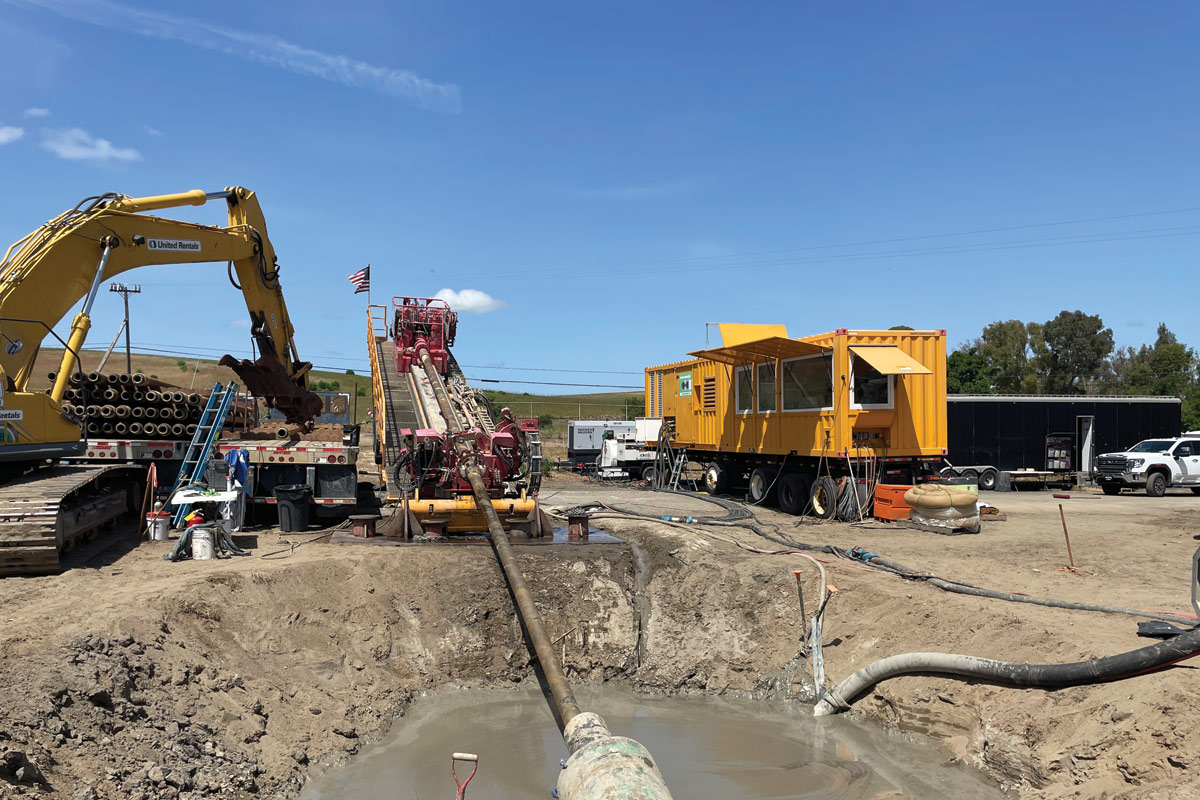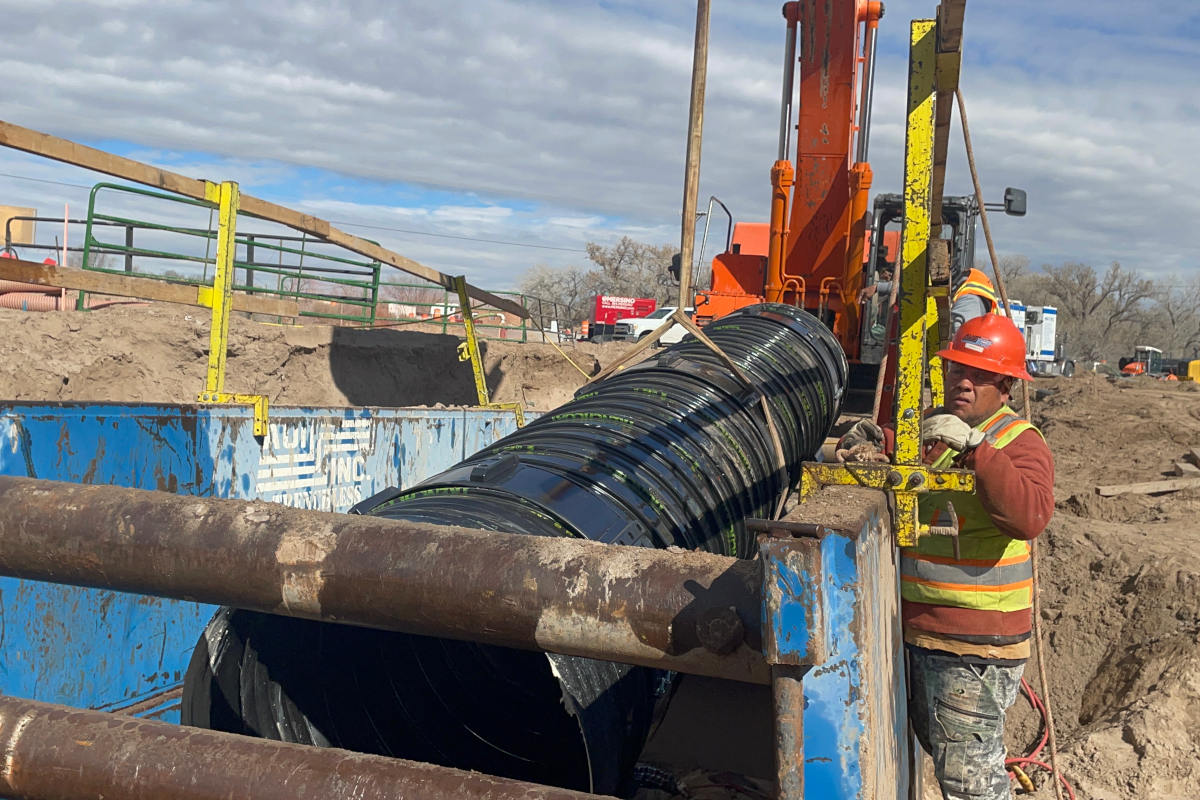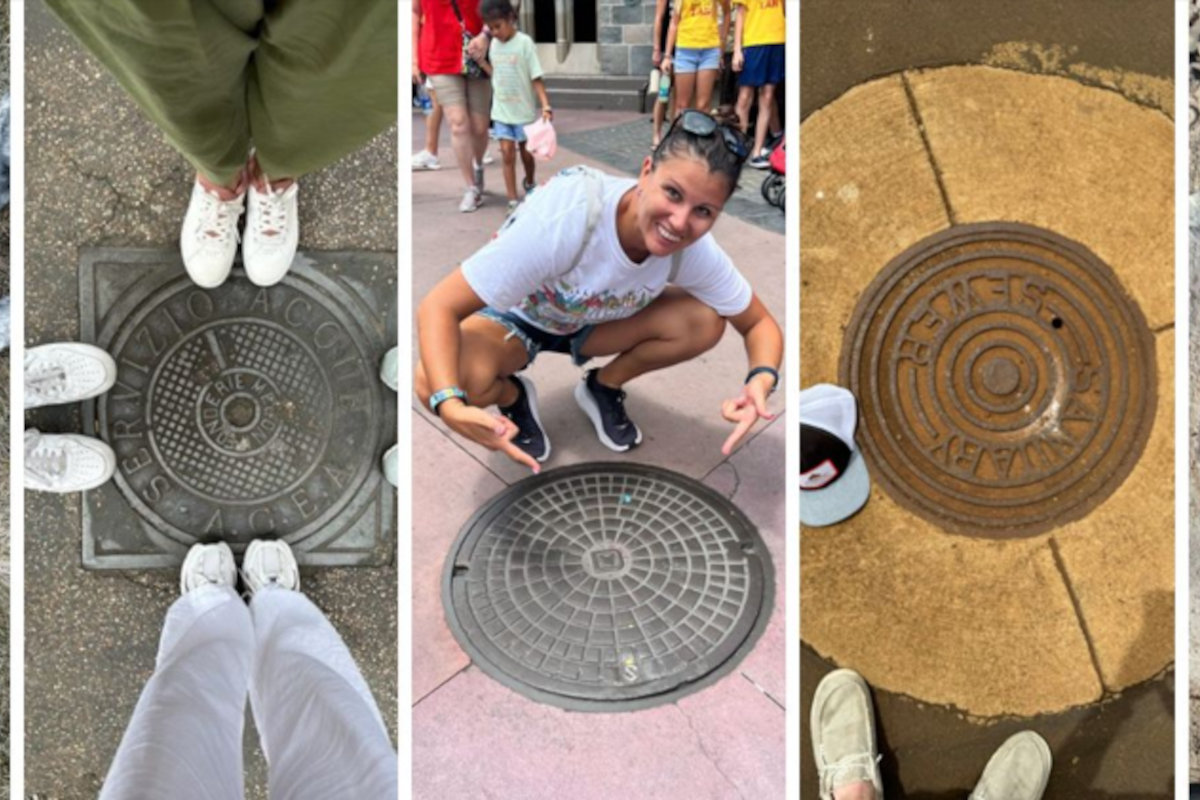
Expert HDD Navigation in Extremely Energized Ground
Utilizing HDD guidance and expert resources on difficult jobsites
A long-distance horizontal directional drilling (HDD) project on its own is a big undertaking. Add in bore-path complications like two heavily vegetated ravines, a road, two restrictive railroad rights of way and a reinforced concrete parking lot, and you have the recipe for a jobsite that contractors are begging to leave.
Not to mention, the bore path runs between two abandoned underground gasoline storage tanks that had been filled, and alongside a mismarked fiber optics line that had to remain up and running.
This was the situation for a fiber-optic installation project in Greensville, South Carolina, which was more than a year overdue as a result of these complications. Luckily for the Greenville customer, their project finally met its match when the Atlas Group agreed to take it on.
Founded in 2001 in Buckhannon, West Virginia, by KJ Woody and his brother, Kyler Woody, Atlas Group is a family-owned, family-operated company serving the needs of underground utility and construction customers throughout the East Coast region. “We are called in to finish jobs other contractors can’t finish. You could say that’s our niche, drilling in hard rock, doing the most difficult jobs,” says Atlas Group president KJ Woody.
Extremely Energized Ground
Atlas was introduced to the job after finishing a separate HDD project for the same Greenville customer in similar energized ground conditions elsewhere in the city. Since the two sites were located close together, KJ anticipated they would have similar problems with signal reception and interpretation. Their initial BPA using their own Subsite TKQ receiver confirmed it.
The overdue 672-ft drill path ran along a busy highway and began directly beneath high-tension power transmission lines. The massive magnetic field completely masked a typical drill string’s beacon signals. Adding further interference was an existing fiber-optic line that lay parallel to the bore path along its full length, also passing between the abandoned gas tanks. As the path rose and descended, there was interference at nearly every point.
Despite the TKQ receiver’s power and accuracy, in many of the places where Atlas crews could get signals, they couldn’t consistently trust them. The shallow noise floor they discovered meant even after a successful start, portions of this job would have to be either drilled blind or exposed.
Even Experts Employ All Available Resources
The Atlas team was confident that they’d succeed despite the job’s complexity, but they wanted to see if they could get better signal reliability. They decided to bring in Subsite rep and application specialist, Brett Romer, to demo the newest HDD guidance equipment.
Romer brought a four-frequency Subsite TK RECON 4 receiver, Subsite 17T4 beacon and Subsite Commander 7 remote display to the site. What’s more, KJ said, Romer brought a “wealth of knowledge” that further increased his and Kyler’s understanding of how interference affects a receiver’s interpretation and how to use that knowledge to their advantage.
Innovations in HDD guidance systems have made them so user-friendly over the years that they are a cinch to learn and operate. However, interpreting what they say in actual field conditions entails a much deeper grasp of the underlying operating principles.
Romer hooked up the Commander 7 to Atlas’ Ditch Witch JT3020 All Terrain drilling rig and calibrated the receiver. Using both receivers on hand, the team initiated another BPA, comparing the results to the first BPA. Comparisons are useful because they can show, for instance, whether anomalous variations remain consistent from one BPA to the next or if they have changed with time of day or other variables. Both instruments recommended frequencies of 29 kHz and 12 kHz to mitigate ambient interference.
Then they began drilling.
Completing the Task
When the crew got to within 12 ft of the active railway tracks, they switched guidance techniques from the TK system’s walkover mode to its DrillTo mode. Despite the distance to the receiver, the driller easily tracked bore progression to the target on his Commander 7 display. The setup had a continuously reliable signal with the bore 14 ft beneath the rails, progressing at about 2 ft a minute for each rod.
The final peak of the bore path topped out about 150 ft away from run completion. The trick here would be steering the bore precisely enough to avoid the fiber optic line running alongside the bore path and the abandoned gas tanks on the other side of the lot.
Even using a Subsite Utiliguard locating system, it took two hours to locate the fiber-optic line. The crew finally had success after running out an additional 50 ft of fish tape and grounding the transmitter to the air conditioner ground of a nearby business. They first detected the signal by running the unit at 13,000 Ohms. Setting the power to level 5 and using 8.01 kHz enabled the crew to get down to reliable reception at 5,000 Ohms.
Despite being satisfied with their utility locator’s settings, the crew did not believe the reading it was giving them. They knew the fiber as marked was mislocated, but they were showing it at just 1 ft, 1 in. below the concrete.
Every Experience Is a Learning Experience
Atlas called in a ground penetrating radar (GPR) contractor to ascertain the fiber optic line’s true location, only to learn their readings had been almost dead on. Despite the Atlas Group’s excellent track record, the team agreed there is always something more to learn on each jobsite.
“Everyone gains from each locating experience. Maybe it’s not something we use on the next job, but it adds to our expertise,” KJ said. “The best advice we have to give is, why not use all your resources on hard jobs?”
This article was contributed by Subsite.




